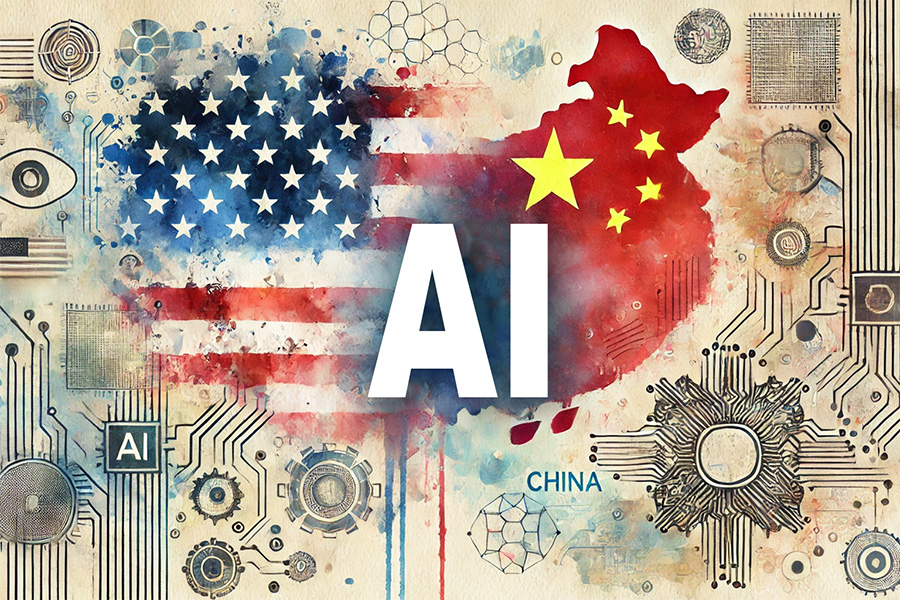America’s strategic mindset on AI needs a reset

The recent emergence of DeepSeek shows the U.S. should stop assuming that its dominance in artificial intelligence is guaranteed
By Tian Feng
From Silicon Valley boardrooms to Wall Street trading floors to Washington policy circles, a comforting assumption prevails: American AI supremacy is guaranteed by its overwhelming advantages in computing power and proprietary models.
This mindset, reinforced by export controls on advanced chips and billion-dollar investments in closed AI systems, has become conventional wisdom among tech executives, investors and policymakers alike. But recent developments from China, particularly the emergence of DeepSeek, suggest this trilateral consensus may be dangerously misplaced. As someone deeply embedded in China’s AI ecosystem, I see a fundamental shift occurring that challenges core assumptions about how AI leadership will be determined in the coming years.
DeepSeek, a relatively unknown Chinese startup until two months ago, open-sourced AI models that matched OpenAI’s finest in capability — at what I estimate to be just one-tenth of the training cost. This wasn’t achieved through superior computing power or by poaching Silicon Valley talent. Instead, it came from rethinking the fundamentals of model architecture and training efficiency. This breakthrough reveals the limitations of America’s current strategy for maintaining AI dominance.
The U.S. approach has centered on two pillars: restricting China’s access to advanced semiconductors and keeping cutting-edge AI models behind closed doors. Both strategies are showing cracks. While China’s raw computing power may lag behind America’s by an order of magnitude, Chinese engineers are finding innovative ways to maximize efficiency from existing hardware. At DeepSeek, researchers have developed novel GPU optimization techniques that American firms are now rushing to understand and replicate.
Meanwhile, China’s semiconductor industry is making steady progress. SMIC’s (0981.HK; 688981.SH) 7nm chips and Huawei’s Ascend AI processors, while not matching Nvidia’s (NVDA.US) latest offerings, demonstrate that the gap is closing. Within five years, China could achieve self-sufficiency in AI chip production, rendering export controls increasingly irrelevant.
Building global developer communities
But the more significant challenge to American dominance comes from China’s embrace of open-source AI development. While U.S. companies guard their models as crown jewels, Chinese firms are increasingly sharing their research openly. This approach isn’t just altruistic — it’s strategic. By democratizing access to advanced AI, Chinese companies are building global developer communities and accelerating innovation through collective effort.
The talent equation is also shifting. A decade ago, Chinese tech companies relied heavily on U.S.-trained researchers. Today, universities like Tsinghua in Beijing and HKUST in Hong Kong are producing world-class AI scientists who are choosing to stay in China, attracted by the opportunity to work on fundamental problems without immediate pressure to monetize their research.
Perhaps most importantly, China’s approach to artificial general intelligence (AGI) differs markedly from America’s. While U.S. efforts often focus on achieving breakthrough moments in pursuit of military applications, Chinese firms are embedding AI into practical civilian applications at massive scale. From agricultural drones to healthcare robots, China’s AI development is driven by immediate societal needs rather than speculative moonshots.
This pragmatic focus creates a virtuous cycle. Each deployed application generates real-world data that improves model performance. With hundreds of millions of AI-enabled devices operating across China’s vast infrastructure, Chinese companies are accumulating invaluable training data that’s difficult for U.S. firms to match.
None of this means American leadership in AI is doomed. The U.S. still possesses immense advantages: world-class institutions, a culture of innovation, and deep capital markets. But maintaining leadership will require a strategic reset focused on four key areas.
First, the U.S. must reconsider its stance on open-source AI development. The current emphasis on proprietary models creates isolated pools of knowledge that slow overall progress. Second, America should invest heavily in software innovation rather than relying solely on hardware advantages. Third, the U.S. must streamline its immigration system to attract and retain global talent, particularly in fundamental research. Finally, American strategy should balance military applications with civilian use cases that can generate immediate economic value.
The rise of DeepSeek and similar Chinese innovations shouldn’t be seen as a threat but as a wake-up call. The next phase of AI development won’t be won through computing power alone, but through creativity, efficiency and openness to global collaboration. America’s technological leadership has always stemmed from its ability to adapt and innovate. Now is the time to demonstrate that adaptability again.
Tian Feng is the founder of the Fast-Slow Think Research Institute, an independent AI think tank in China. You can reach him at:iamtianfeng@aliyun.com
This commentary is the view of the writer and does not necessarily reflect the views of Bamboo Works
To subscribe to Bamboo Works weekly free newsletter, click here






